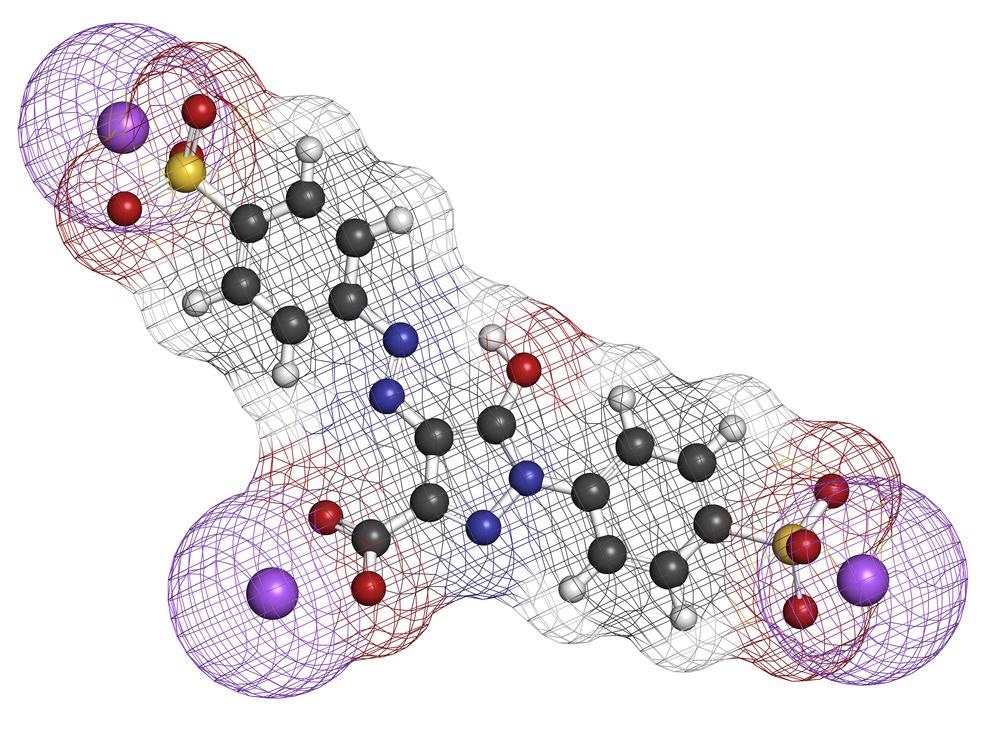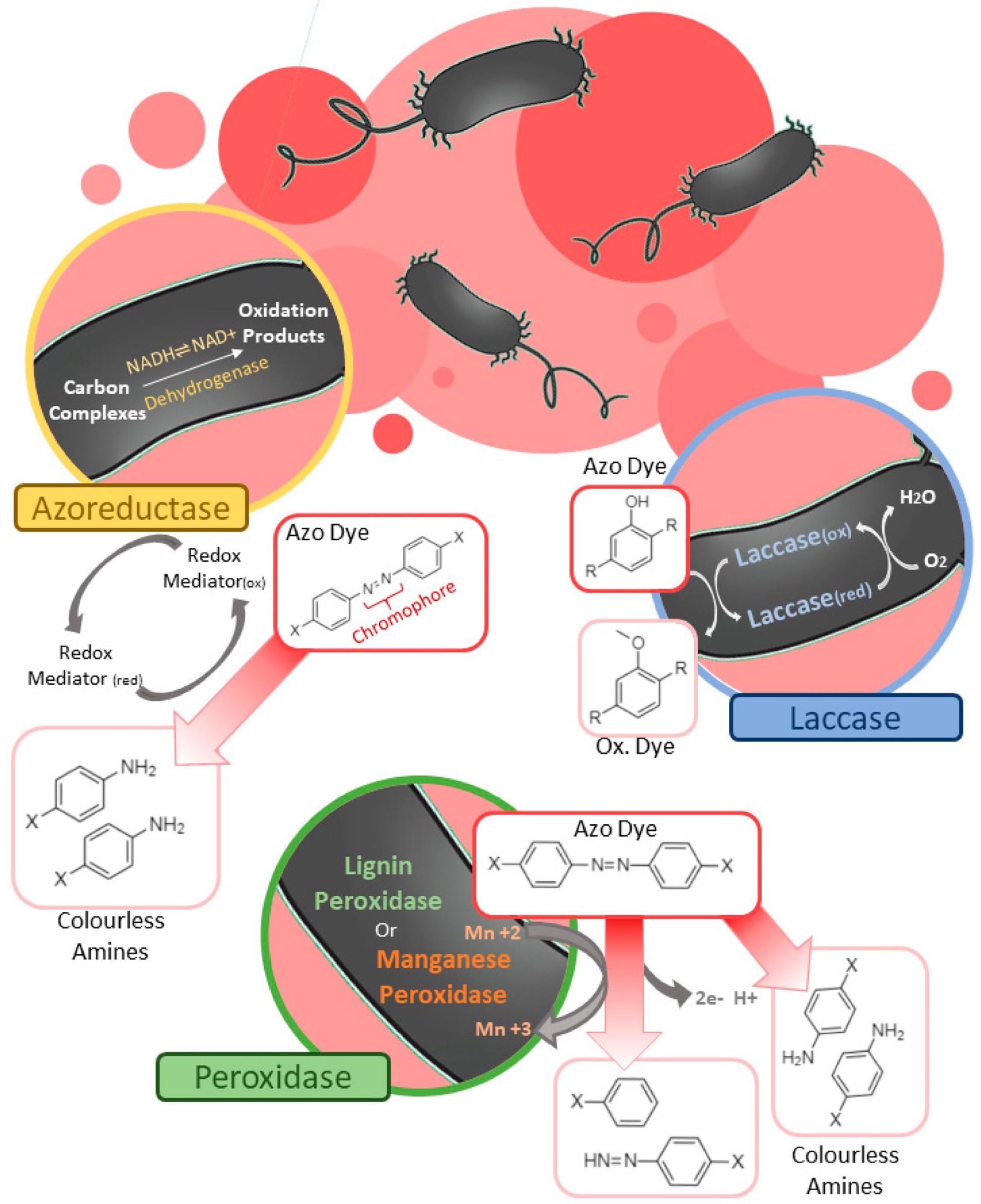For millennia, organic sources were used, which meant the dyes could be easily biodegraded, but the introduction of synthetic compounds such as azo dyes has presented environmental challenges. Investigating the use of bacteria for bioremediation of these environmentally damaging and toxic chemicals is the central focus of a new paper published in Sustainability.

Yellow azo dye used in food, beverages, pharmaceuticals, etc. Image Credit: StudioMolekuul/Shutterstock.com. Study: Degradation of Azo Dyes: Bacterial Potential for Bioremediation.
Synthetic Dyes: A Growing Source of Environmental Pollution
Historical evidence shows that dyes were already in use by 3,500 years BC. Long having been used for aesthetic purposes, until relatively recently pigments and dyes were exclusively organic in origin. Mineral, vegetable, and animal sources were used to color textiles, dwellings, weapons, utensils, decorative objects, and artworks.
The first synthetic dye, mauveine, was discovered by accident in 1856 by William Henry Perkins. Since then, the range of synthetic dyes has widened significantly, with around 10,000 different dyes produced industrially today. Synthetic dyes have largely replaced natural variants due to their cost-effectiveness, resistance to environmental factors such as sunlight, chemicals, and moisture, and their wide range of available colors.
It is estimated that 700,000 tons of dye are produced annually, meeting the growing demands of industry and commerce. However, this growth has a huge environmental cost. According to current estimates, 10-15% of synthetic dye production ends up being disposed of in the environment, primarily into marine ecosystems.
Contamination from synthetic dyes causes environmental damage, including perturbations in marine oxygen levels, interference with the absorption of sunlight by water, neurosensorial damage in marine animals, metabolic stress, flora necrosis, and impacts on fauna growth, amongst many other effects. Additionally, if untreated, toxic compounds found in dyes can enter the food chain, causing serious health issues in humans.
Azo Dyes
Azo dyes are synthetic and organic chemical compounds. They are used in a diverse range of products including food, cosmetics, textiles, and pharmaceuticals. Widely used in the dyeing industry, they are present in 50%-65% of all commercial formulations. This is due to their chemical versatility and stability, and they possess high fixation and resistance to both moisture and light. Whilst commercially useful, these properties are main factors affecting their biodegradability in the environment.
Azo dyes are characterized by their strong coloration. Comprising approximately two-thirds of commercially used synthetic dyes, they have the widest range of use and greatest structural diversity out of all dyes on the market. Azo dyes and their by-products are a serious cause for concern, and they are classed as highly carcinogenic compounds. Azo dye by-products are produced by the cleavage of the azo bonds.
Due to the issues with untreated dyes and by-products entering the environment, there has been significant research focus on treatment strategies. Solutions proposed include physical, chemical, and biological remediation processes. Of these, bioremediation has proven to be the most attractive strategy due to its low environmental impact, cost-effectiveness, and efficient decoloration of dyes.

Schematic representation of three general bacterial enzymatic degradation mechanisms of azo chromophore group. Firstly, showing the enzymatic degradation by the action of azoreductases—yellow—in this example using NADH as an essential reducing agent for the cleavage of azo bonds, generating aromatic amines and thus discoloring the medium. Then—clockwise—we have the catalytic reaction cycle mediated by laccase—blue—with generation of oxidized substrate instead of potentially toxic amines, in addition to not requiring cofactors. Finally, peroxidase enzymes—green—such as lignin peroxidase and manganese peroxidase, two enzymes most commonly used for dye degradation, illustrating some possible products according to the cleavage of their bonds, which can be symmetric or asymmetric. Image Credit: Santana Pinheiro, L.R et al., Sustainability
The Study
The research published online in Sustainability has focused on the bioremediation of azo dyes and their by-products using microbes. Many bacterial species have developed biological mechanisms, primarily enzymatic, for decolorizing media contaminated by azo dyes. The efficiency of these mechanisms is limited by physiochemical parameters, however. Understanding the relationship between these parameters is key to improving the process of bioremediation.
The versatility of bacteria allows for the possibility of a range of applications with either pure cultures or cultures working in consortia that can tolerate different physiochemical parameters. Thus, the process can be adapted to different industrial wastes containing various and multiple dyes. Additionally, the authors have stated that more than one saleable product or service can be offered, overcoming the bottleneck of cost that prohibits the application of biological systems.
The authors have considered the range of available literature on the subject and have stated that scientific advances in the field and remediation efforts that tackle the current gaps in research impact the widespread commercial application of microbial bioremediation strategies. Bacterial bioremediation, as evidenced by the literature, is becoming an increasingly feasible process for the treatment of azo dyes and their by-products.
Challenges still exist with the bacterial bioremediation of azo dyes. Several factors need to be considered for the widespread application of the strategy, depending on the technique used, environmental characteristics, and the bacterial strain used. The authors have identified relevant bottlenecks, including maintenance costs of bioreactors, physiochemical parameters, available space for the use of bioreactors or wetlands, scalability, legislation and regulatory considerations, toxic by-products that cannot be degraded, and changes in dyeing techniques that modify the effluent and require the bioremediation technique to be adapted.
Regardless, even with the current challenges and bottlenecks which the study has attempted to critically address, the authors have stated that the promising results from laboratory tests, pilots, and real-world studies along with the urgent need for sustainable industrial-scale solutions attests to the potential for bacterial bioremediation of azo dyes and a path toward sustainable, clean, and responsible production.
Further Reading
Santana Pinheiro, L.R et al. (2022) Degradation of Azo Dyes: Bacterial Potential for Bioremediation [online] Sustainability 14(3) 1510 | mdpi.com. Available at: https://www.mdpi.com/2071-1050/14/3/1510
Disclaimer: The views expressed here are those of the author expressed in their private capacity and do not necessarily represent the views of AZoM.com Limited T/A AZoNetwork the owner and operator of this website. This disclaimer forms part of the Terms and conditions of use of this website.